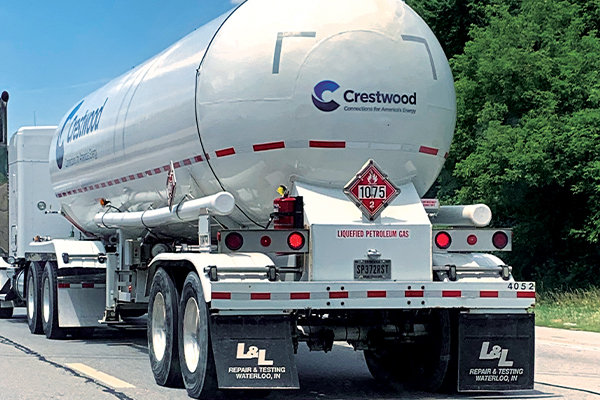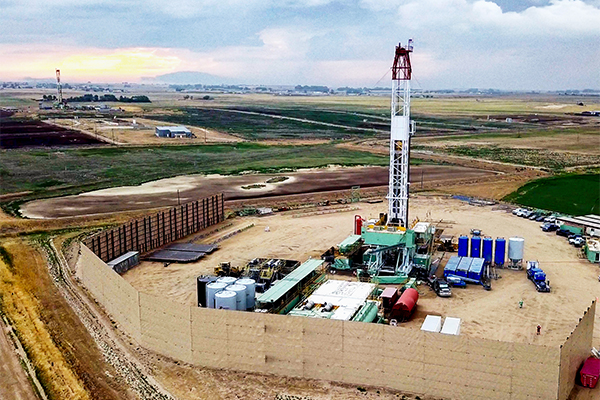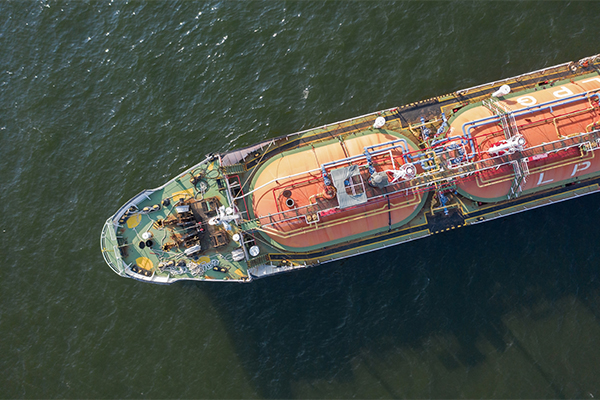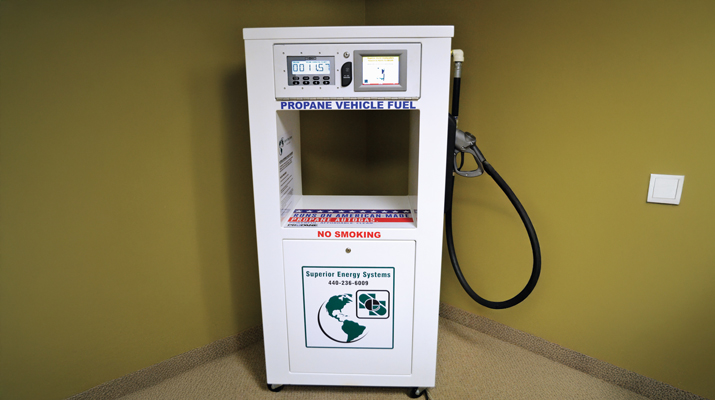Propane industry explores shifts in supply, distribution patterns
Changes in supply and distribution dynamics are forcing propane industry leaders to ponder the potential impacts on marketers’ ability to serve customers reliably this winter.

U.S. propane inventories have trended on the high side of the five-year average heading into winter, but upstream disruptions may pose challenges. Photo by LP Gas staff
Steve Kossuth, vice president of global LPG supply for UGI Corp., broached supply themes and trends on a National Propane Gas Association (NPGA) webinar series earlier this year.
“The industry believes that supply lanes will be stretched out further than in prior years given what’s going on upstream of our business – namely at the refinery and gas plants that feed us the valuable propane we use to bring to our customers,” says Kossuth, also chairman of NPGA’s Propane Supply and Logistics Committee, who promoted increased dialogue among industry stakeholders leading into the heating season.
COVID-19 shocked energy markets when it took hold in March and President Donald Trump declared a national emergency. Stay-at-home orders had homeowners burning more propane for residential purposes – which is also the expectation for this coming winter, according to the U.S. Energy Information Administration (EIA).
But the social distancing measures that restricted movement and snarled travel around the country, especially early in the pandemic, led to a falloff in transportation fuel demand and a decline in energy production. Crude oil producers curtailed their production and reduced drilling activity as prices dropped, lowering the output for the major U.S. oil-producing regions, the EIA reports. Refiners also responded to the changes in transportation fuel demand by decreasing refinery runs.
“Supply-side availability of propane depends on the economics for drilling crude oil wells and, to a lesser extent, natural gas and crude oil prices,” says Rusty Braziel of RBN Energy, on an NPGA webinar in July.
While market conditions have improved since early in the pandemic, and U.S. propane inventories have trended on the high side of their five-year average going into the winter, the industry has braced for a potential fallout from upstream disruptions.
As Braziel shared during the summer, “This year is going to be different than anything we’ve seen in the recent past.”
Local supply sources
The novel coronavirus pandemic only added to a recent trend in the industry and one that NPGA has addressed in its “Propane Supply Planning” white paper.
NPGA published the paper following the challenging winter of 2013-14, but industry leaders referenced it again this year after the pandemic hit, also sharing an “ABCs of Supply Preparation” checklist to keep supply best practices at top of mind.

Shale oil and gas reserves created more local sources of propane supply. Photo: grandriver/iStock / Getty Images Plus/Getty Images
Shale plays such as the Marcellus and Utica in Ohio and Pennsylvania, the Eagle Ford and Permian in Texas and New Mexico, and the Bakken in North Dakota have become some of the most notable oil and gas reserves around the country over the last decade.
These reserves created more local sources of propane supply, giving marketers an opportunity to purchase product regionally and often at attractive prices, the NPGA white paper explains. However, “shale production … can lure the marketer away from engaging in and then performing on traditional supply contracts,” leading to negative impacts on building winter allocation levels, according to the white paper.
In recent years, customers have tried to save on costs and source their supply closer to their operations, says Angela Branchi, senior vice president of the NGL division at Grammer Logistics.
Where once a traditional trucking lane would be 300 to 400 miles, “everything started to tighten up with the rails and transloaders,” she says. “It became the norm to get as close to your supply, and it shrunk the driver pool and asset pool.”
“The propane industry has had this luxury of using local supply,” Kossuth adds.
But what if local supply sources can’t satisfy the industry’s needs? Kossuth worries some in the industry might need to strengthen their “allocation muscle memory” to source propane from the pipeline when local supply may not be enough.
Without having earned allocation by shipping on the pipeline year-round, the propane industry is at the mercy of other shippers and competing products, supply leaders say.
“If you don’t have that ‘insurance policy,’ you have to drive to get product, and that adds a lot of cost,” Kossuth says.
Drivers lost to retirement and other commodities – driver shortages being an ongoing issue in the trucking industry – also creates added stress if the need arises to lengthen propane hauls this winter.
Excess for exports
U.S. propane exports make up another piece of the changing supply picture, as several export terminals in the U.S. and Canada are moving excess product to international markets.

U.S. propane exports make up another piece of the changing supply picture. Photo: think4photop/iStock / Getty Images Plus/Getty Images
New propane export capacity in the West (AltaGas’ Ridley Island Propane Export Terminal in British Columbia) and East (Energy Transfer’s Marcus Hook terminal in Pennsylvania) are consuming surpluses that once were available to the U.S. propane market, says Braziel. Companies have also invested in infrastructure to feed exports from the Gulf Coast.
These outlets are furthering a steady, decade-long climb in U.S. propane exports, which have reached an average of about 1.3 million barrels a day, according to EIA.
“The U.S. has outlets that it hasn’t had historically over the last 10 years,” Kossuth says. “Those outlets provide better economic vehicles for propane to find the best market alternative. Now product has to come from different origins to feed domestic demand.”
Braziel explains on the NPGA webinar about how propane surpluses from the Marcellus/Utica, Alberta/Edmonton and Bakken shale regions were forced to move long distances by rail to find markets. This movement allowed much of the U.S. to have access to this surplus propane. But that’s no longer the case and a reason Braziel warned that local markets could face disruption in the event of cold weather events, requiring longer hauls of propane barrels to meet market demand.
“When you change the distribution patterns because of changes of available supply, what people are willing to contract for and the economics, that’s going to cause changes in the trucking lanes,” Kossuth adds.
“You layer in COVID, and we just think there’s going to be a calling on the trucks in a manner that, if Mother Nature shows up, we haven’t seen in a couple of years.”
The combination of changes related to crude markets and energy production, COVID-19 impacts and product flows related to U.S. propane exports is leading industry leaders to stress the importance of supply planning and communication for this winter and beyond.
“Given how this year has gone so far, it seems to me this would not be a good propane season to roll the dice with Mother Nature,” Braziel says.
















